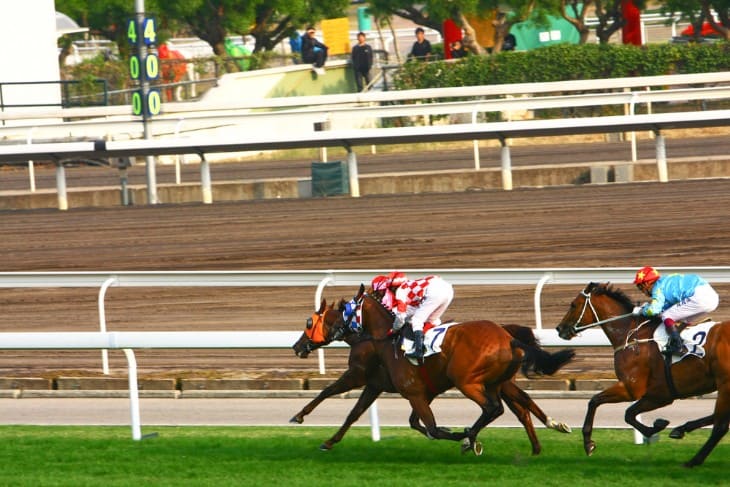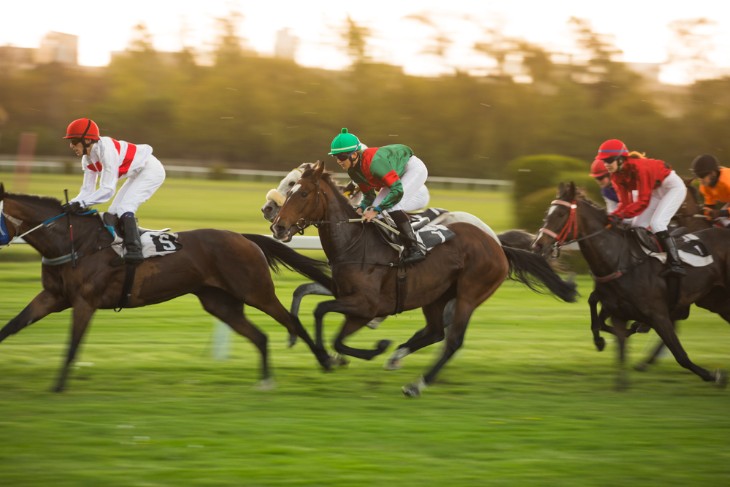- A Brief History of Horse Racing
- Understanding Track Bias
- Factors Contributing to Track Bias
- Types of Track Bias
- The Role of Weather and Track Conditions
- Analyzing Track Layout and Configuration
- The Impact of Jockey and Horse Strategies
- Statistical Trends and Data Interpretation
- Mitigation and Adaptation Strategies
- Conclusion
When it comes to the thrilling world of horse racing, there's more than meets the eye. Amidst the thunderous hooves and cheering crowds, there lies a hidden factor that can make or break a race: track bias. The concept might sound unfamiliar to some, but it's a crucial element that plays a significant role in the outcome of horse races. In this exploration, we'll dive into the depths of track bias, understanding its historical context, its impact on racing, and why it's a topic every racing enthusiast should be familiar with.
A Brief History of Horse Racing
Horse racing has been a celebrated pastime for centuries, tracing back to ancient civilisations. From chariot races in ancient Rome to the majestic derby events of the present day, horse racing has captivated the hearts of millions. Yet, beneath the glamour and prestige, a quieter but equally important narrative has unfolded over the years – the story of track bias.
Track bias refers to the unequal conditions that certain parts of a racetrack may present, giving certain horses an advantage or disadvantage based on where they're positioned. This phenomenon isn't a new discovery; it's been observed since the early days of the sport. Back when horses galloped on uneven terrain and tracks weren't meticulously designed, track bias was perhaps even more prevalent.
In those days, track bias might have been attributed to simple geography. Perhaps one side of the track received more sunlight, causing the soil to dry and the footing to become firmer. Or maybe a particular curve of the track had a slight incline that shifted the advantage towards horses with greater stamina. While modern tracks are engineered to be more consistent, track bias still lurks, influenced by factors like weather, track configuration, and race distance.
Understanding Track Bias
As we venture further into the realm of track bias, it's important to grasp the concept at its core. Imagine a racetrack as a canvas, and each part of it as a brushstroke that affects the overall picture. Track bias occurs when specific areas of the track provide either an advantage or a disadvantage to the competing horses.
One of the key factors influencing track bias is the track's condition. A wet or muddy track, for instance, can create a bias towards horses that are accustomed to such conditions, giving them a firmer grip on the track and a potential advantage. Conversely, a dry and hard track might favour horses that excel in such terrain.
Factors Contributing to Track Bias
However, track bias isn't solely dependent on the weather. An array of factors comes into play, often interacting in intricate ways. The layout and configuration of the track can significantly impact the development of bias. A track with tighter turns might benefit horses with better agility, while a straighter track could favour those with a strong burst of speed.
Furthermore, the positioning of the starting gate can create bias. Horses positioned closer to the inside of the track might have a shorter distance to travel, potentially giving them a head start. This is especially significant in shorter races where fractions of a second can make all the difference.
Another fascinating dimension of track bias is the psychology behind jockey and horse strategies. Skilled jockeys are acutely aware of bias tendencies and often adjust their tactics to capitalise on them. They might push harder on the straightaways of a track known for late-closing bias or conserve energy for a late surge if the track favours front-runners.
Understanding these contributing factors allows us to see that track bias isn't a mere coincidence – it's a product of intricate variables interacting in a dynamic environment. Recognising these patterns and influences can provide us with a deeper appreciation of the sport and, for some, a strategic edge when it comes to betting.
Types of Track Bias
Diving into the intricate world of horse racing reveals that track bias isn't a one-size-fits-all phenomenon. It comes in various forms, each influencing races differently based on distance and track characteristics.
For instance, a bias might favour horses that start quickly and maintain a strong pace throughout the race. Such a bias can be advantageous in shorter races, where the ability to maintain speed can secure victory. On the other hand, a bias towards late-closing horses can be more significant in longer races, where a powerful finish can outshine an early lead.
As we dissect the nuances of these biases, it becomes apparent that understanding the type of bias in play can guide jockeys' and bettors' strategies. It's not just about knowing that a bias exists, but also recognising its nature and adapting accordingly.

The Role of Weather and Track Conditions
In the ever-changing landscape of horse racing, the weather and track conditions wield a considerable influence on track bias. Picture a rainy day – the track becomes sodden and heavy, altering the playing field dramatically. Horses accustomed to wet conditions might shine, their hooves digging into the softer ground for traction. Here, track bias becomes intertwined with the elements, creating an additional layer of complexity.
Conversely, a dry and firm track can pave the way for horses with more speed, where less energy is absorbed by the track itself. This can be particularly advantageous for front-runners who rely on a strong initial burst to secure the lead.
Understanding the interplay between weather, track conditions, and bias is essential for both enthusiasts and professionals. It's not just about predicting the weather for race day – it's about comprehending how these factors interact and influence each other, ultimately shaping the dynamics of the race.
Analyzing Track Layout and Configuration
Have you ever considered how the shape of a racetrack can influence the outcome of a race? The layout and configuration of a track are integral to the development of track bias. Tracks with sharp bends might favour agile horses that can navigate turns more effectively, while tracks with longer straightaways can provide a battleground for horses with powerful sprints.
The placement of the starting gate also plays a pivotal role. Horses starting on the inside have a shorter distance to travel, potentially giving them an edge. However, this can lead to a disadvantage for outside horses that need to cover more ground to reach the same point.
These factors intertwine to create a dynamic environment where track bias emerges. Recognising the layout's influence empowers jockeys and bettors to anticipate how bias might unfold during a race. It's a chess game, where understanding the board – in this case, the track – is key to making strategic moves.
The Impact of Jockey and Horse Strategies
Horse racing is a dance between horse and jockey, a collaboration of skill and strategy. The presence of track bias adds an extra layer of complexity to this choreography. Skilled jockeys are akin to experienced chess players, meticulously studying the board – the track – and adapting their moves to exploit bias tendencies.
If a track favours horses with a strong final sprint, jockeys might hold back their mounts, conserving energy for a late burst. On tracks that encourage a blistering start, jockeys may encourage their horses to break out of the gate with a burst of speed.
The horses themselves are not passive participants either. They are finely tuned athletes, each with their unique strengths and strategies. Some horses are naturally inclined to be front-runners, taking the lead from the very start. Others thrive in the final stretch, passing competitors with a burst of acceleration.
By studying and adapting to track bias, jockeys and trainers maximise their chances of victory. Bettors who understand these strategies can also make more informed choices, using bias to predict how certain horses and jockeys might perform under specific track conditions.
Statistical Trends and Data Interpretation
Numbers and statistics might not be the first things that come to mind when you think of horse racing, but they are fundamental in uncovering the secrets of track bias. Every race leaves behind a trail of data – times, positions, and outcomes – that can be analysed to reveal bias patterns.
By meticulously studying historical race data, analysts can identify trends that hint at the presence of bias. For instance, if a specific lane consistently produces winners in a certain type of race, it could indicate a bias favouring that position. These patterns might emerge over weeks, months, or even years, providing invaluable insights to both experts and enthusiasts.
Data interpretation isn't just about crunching numbers; it's about understanding the story that the data tells. Just as a skilled detective pieces together evidence to solve a case, data analysts piece together race results to unravel the mystery of track bias. This information isn't only useful for betting purposes but also for racing authorities striving to ensure fair competition and level the playing field.
Mitigation and Adaptation Strategies

As with any aspect of life, acknowledging a problem is only the first step; finding solutions is equally important. Racing authorities are well aware of the impact of track bias and strive to create an equitable environment for all participants. Measures might include adjusting the position of the starting gate or carefully managing the track's surface to minimise bias effects.
For jockeys and trainers, adapting to track bias is essential for success. Skilled jockeys understand when to push harder, when to hold back, and when to exploit bias tendencies to their advantage. They become masters of reading both their horses and the track, making split-second decisions that can determine the outcome of a race.
The world of track bias is a complex one, with countless variables interplaying to shape race dynamics. Whether you're a racing enthusiast, a dedicated bettor, or simply curious about the mechanics of the sport, understanding track bias adds a layer of depth to your horse racing experience.
Conclusion
And so, we arrive at the conclusion of our journey into the realm of track bias in horse racing. What began as a subtle factor hidden beneath the surface has revealed itself to be a crucial element that shapes the outcomes of races in more ways than one.
Throughout this exploration, we've delved into the historical context of track bias, understanding its roots in the early days of horse racing and its continued relevance in the modern sporting arena. We've unravelled the complexities of bias development, considering factors like weather, track layout, and strategic adaptation.
From recognising the various types of bias that favour different race distances to understanding the impact of weather and track conditions, we've witnessed how these elements interact to create an intricate tapestry of racing dynamics. We've explored the strategies employed by jockeys and trainers, who read the track like a map and navigate bias tendencies to their advantage.
Furthermore, our journey has revealed the importance of data analysis and statistical trends in uncovering bias patterns. We've witnessed the dedication of racing authorities to maintain fairness in the sport, even as they grapple with the challenges posed by bias.
In closing, the study of track bias isn't just for seasoned professionals or seasoned bettors. It's an invitation to see beyond the surface of the races, to appreciate the chess game that unfolds as jockeys, horses, and track conditions converge. It's a reminder that horse racing is a tapestry woven with countless threads, where every element contributes to the final picture.
For more information:
- Top UK Horse Racing Tracks
- The Impact of Weather on Horse Races
- The History of Bookmaking in Horse Racing








